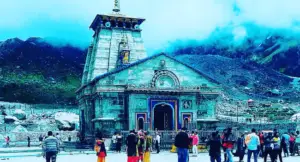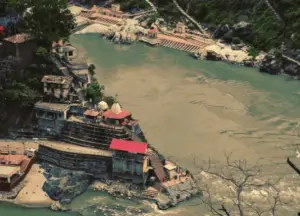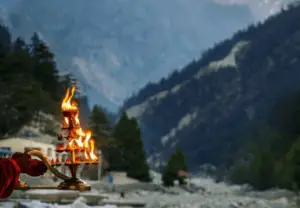Interesting facts about Kedarnath Temple | Historical Facts

- By
- Aparna Patel
- |
- 29 Sep, 2019
- |
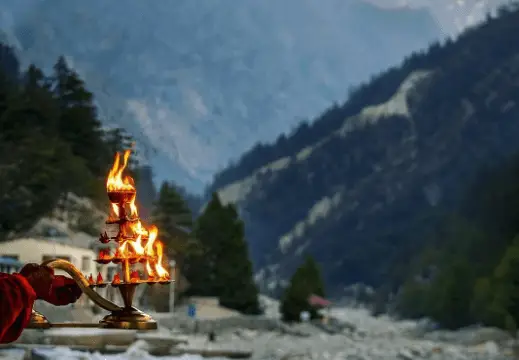
Kedarnath is one of the holiest pilgrimage sites for Hindus to visit Chardham. Kedarnath temple established, in Rudraprayag district of Uttarakhand state of India is one of the four Dham and Panch Kedar, joining 12 Jyotirlingas in the lap of the Himalayan Mountains in Uttarakhand. In Hindu religions, the way of the Char Dham is described, as auspicious. In the same way, the journey of the 12 Jyotirlingas of Lord Shankar is also fruitful. Kedarnath remained the most affected area due to flash floods and landslides in the states of Uttarakhand and Himachal Pradesh in India during June 2013. The walls of the temple fell and flowed in the flood. The central part of this historic temple and the centuries-old dome were protected, but the entrance to the temple and the area around, it was destroyed. Kedarnath Temple is a grand and great temple built at an elevation of 3593 feet. How this temple was built at such a height, cannot be imagined even today! Temple worship is considered to be one of the Shree Kedarnath Dwadash Jyotirlingas. Today we will tell you specific things about this ancient temple, after knowing that your reverence for this temple will increase further.
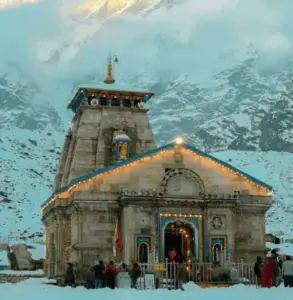
Table of Contents
Amazing Famous Facts About Kedarnath For Tourists and Kids
- The unpredictable bad weather here does not allow people to come here comfortably. The weather can be critical at any time. Only a single cloudburst fills the entire complex with water and stones. In the year 2003, Kedarnath suffered an immense natural disaster. The sad part of this disaster was that the foremost part of the small town of Kedarnath was destroyed, in the floodwaters. It did not have that much effect on the temple. Seeing, some footage there, it is found that the large stone behind the temple divided the flood water coming towards the temple in two parts.
- Some religious scholars also feel that nothing can ever happen to this holy temple no matter how big a disaster comes because Lord Shiva, who is the main deity of this temple, is protecting this temple himself.
- However, we have no choice but to question the unscientific idea that if the gods themselves are protecting, them then why thousands of people died in this disaster? Even the corpses were lying everywhere around the temple. After the relief work, the government built the temple again. According to scientists and scholars, the temple has been poorly affected due to the negative energy of dead bodies buried under the debris due to that disaster.
- He advised that those corpses should be removed and cleaned soon from the temple premises. Then, before bringing the temple back to excellent condition, one of the 12 Jyotirlingas should be purified.
- Notably, a triangle-shaped Linga is worshiped in Kedarnath. It is, very reverential that whoever prays here with all his heart will be forgiven and after death, he will get Kailash (heaven) only.
- Scientist Dr. RK Doval also reiterates this. Doval says that the temple is very, strong. Its walls are covered with, thick rocks, and its roof is made, of a single stone.
- The Kedarnath temple is 85 feet high, 187 feet long and 80 feet wide. Its walls are 12 feet thick and made of incredibly strong stones.
- The temple stands on a 6 feet high platform. It is, astonishing how the temple would have been carved by bringing such heavy stones at such a height. Experts believe that interlocking technology may have been used to connect the stones. It is this strength, and technology that has managed to keep the temple standing in the middle of the river.
Watch Kedarnath Temple Video here:
History, Information and architecture about Kedarnath Temple
Here it is believed that it is incomplete to see Badrinath without visiting Kedarnath temple. Visiting it destroys all the sins of the person and gives salvation. It is the largest Shiva temple in Uttarakhand, built by connecting huge rock-cut stones. These rocks are brown. Scholars have given different opinions about when this, the temple was built. According to prominent litterateur Rahul Sankrityayan, it must have been composed in the 12th – 13th century.
According to another opinion, this temple was built by Adi Guru Shankaracharya in the 8th century. According to King Bhoj Stuti of Gwalior, this temple was built, during 1076 –1099 AD. This temple remained fully covered in snow for 400 years, after which it came to light. The temple is built on a platform about 6 feet high. Its sanctum is ancient, which is believed to date back to around 80th century.
Read also: Interesting facts about Konark Sun Temple | Historical Facts
Kedarnath Dham and temple, are surrounded by mountains on three sides. On one side is about 22 thousand feet, high Kedarnath, on the other side is 21 thousand 600 feet, high Bhartkund and on the third side is 22 thousand 700 feet, high Bharatkund. The Kedarnath temple is not only a confluence of three mountains but also five rivers – Mandakini, Madhuganga, Kshirganga, Saraswati and Swarnagouri. It is, situated between the Mandakini and Saraswati rivers. Inside the temple are beautiful sculptures of deities made in ancient times.
Some of these rivers no longer exist, but Mandakini, a tributary of Alaknanda, is still present today. Along with the history of Kedarnath Dham, you must also read the beliefs of Kedarnath Dham. According to the history of Kedarnath Dham, the Shivalinga located in the Kedarnath temple is one of the twelve Jyotirlingas. With the mere sight of Jayotirling, one gets freedom from all sins. Kedareshwar Dham is situated, on the banks of the Kedarnath temple. It is, said about the history of Kedarnath temple made of Katyuri style made of stones, it was built, by Janamejaya of Pandava dynasty.
Establishment of Jyotirlinga of Kedarnath temple: –
On the Kedar Mountains of the Himalayas, the great ascetic male and Narayana sage, an incarnation of Lord Vishnu, performed penance. Happy with his worship, Lord Shankar appeared and according to his request, granted the blessing of living forever as a Jyotirlinga. The site is located, on the Kedarnath mountain area called Kedar in the Himalayas.
Read more:Interesting and fun facts about India Gate | Historical Facts of India Gate
Story of Panchkedar (Kedarnath)-
According to the second story, the Pandavas built this temple. Pandavas were very desperate and full of self-aggression due to killing their brothers in the war. He wanted to meet Lord Shiva so that he could get the path of liberation. But due to the battle of Mahabharata, Lord Shiva was angry with the Pandavas and did not want to meet them. The Pandavas went to Kashi in search of Lord Shiva where they did not get darshan. While searching for Shiva, the Pandavas came to Mount Kedarnath. Lord Shiva took the form of a Taurus bull. Bhima, the most powerful of the Pandavas, came up with another way to find Lord Shiva. He enlarged his size and stepped on two mountains in a great form. God was in bull form with other animals. When this happened, all the animals got out from under Bhima’s feet, but Lord Shiva did not come out. Bhima understood that this bull is none other than Lord Shiva.
Amritkund –
There is a pool behind the temple called Amritkund. By drinking water, people become disease-free. There is a statue of Shiva God, on the left side of the main temple and there is a temple of Bhairav Ji, half a kilometer away from the main temple. It is, said that when the doors of the temple, are closed, Bhairav Ji protects the temple. There is a small temple just behind the temple. There is a mausoleum of Shankaracharya. It is, said that he gave up his body at the age of 32 after establishing four Dham. There is also a Gauri Kund in this area.
Where is the temple of Shiva-Parvati Ji. Due to the change of weather, this temple is open from Akshaya Tritiya (end of April) to Kartik Purnima (November). Along with seeing Kedarnath Jyotirlinga, it is also necessary to have a vision of Nar and Narayan. Upamanyu worshiped Lord Shiva here in the Sat era. The first hall inside the temple has statues of five Pandavas, Krishna God, Nandi, the vehicle of Shiva God, Veerabhadra Shiva’s patron, Draupadi, and many deities. Traveling to this place of pilgrimage is a bit difficult as it is, surrounded by mountains and the weather also gets adverse at times. This pilgrimage site itself is a pleasant place. Only by visiting Kedarnath Jyotirlinga, the problems of devotees, are overcome.
Read more article:Interesting facts about Cellular Jail(kala pani) | Historical Facts
Liconometry Dating:
Scientists of the Wadia Institute also carried out lichenometry dating of the Kedarnath area. By this technique, their time is estimated, by mixing algae and their fungi. According, to this technique, the construction of glacier in the area, of Kedarnath started in the middle of the 14th century and the formation of a glacier in this valley continued till 1748 AD i.e. about 400 years. Joshi said that the most important thing is that the Kedarnath valley was formed millions of years ago by the retreat of the Chorabari glacier. When the glaciers retreat, they grind all the rocks below them like road rollers and leave huge rock pieces together. Joshi says that in such a place there was an art of temple builders. He built such a site and such a safe temple that till date he has not suffered anything. But the people of that era also allowed the population to settle in such a sensitive place, so there was bound to be a loss there.
Temple opening hours
- Kedarnath temple opens at 6:00 am for all devotees. Special pooja (worship), is done from 3:00 to 5:00 in the afternoon.
- The temple has a statue of Lord Shiva with five faces, which is adorned, in the evening. Aarti takes place from 7:30 to 8:30 in the evening. The temple is closed, at 8:30 pm.
- There is a lot of snowfall in the winter, so the temple is opened for devotees at the appropriate time.
- Usually, this temple is opened on 13-14 April and closed on 15 November.
- The worship of the temple is divided, into worship programs like Mahabhishek Puja, Abhishek, Small Rudrabhishek, Shodashopachara Pujan, Ashtopachara Pujan, Sampoorna Aarti, Pandava Puja, Ganesh Puja, Shri Bhairava Puja, Parvati Ji Puja, Shiva Sahastranam.
Best time to visit Kedarnath
The month from April to September is the best time to visit Kedarnath. However, before planning a trip here, do not forget to get information about the weather.
Find Kedarnath Temple On Google Map
How to reach Kedarnath-
Kedarnath is established, on the banks of the Mandakini River. Though there are many ways to reach here, you have to lead the trekking 14 kilometers from the end. In winter, the weather here is frosty. No roads are visible, so the temple of Kedarnath remains closed for six months of the year. The rest of the idols of Gods are worshiped, in Ukhimath on these days.
How to reach Kedarnath Temple by Airplane-
The nearest airport to reach Kedarnath is Jolly Grant Airport Dehradun. The Kedarnath temple is 239 km from here.
How to reach Kedarnath Temple by Road-
Kedarnath Temple can be reached by road from Dehradun, Rishikesh, and Haridwar. Private means such, as jeeps, taxis, cars and other vehicles, can also be booked. Kedarnath is located 223 kilometers from Rishikesh. Kedarnath has located 458 km from Delhi.
How to reach Kedarnath Temple by Rail-
Kedarnath Dham can be reached by traveling, 4 hours from Haridwar or Rishikesh by rail. This path is hilly and winding.
Search Posts
Latest posts
-
4 Mar, 2024
Can I accidentally miss the in-flight food?
Popular posts
-
5 Mar, 2024
Why prohibit engine braking?
-
5 Mar, 2024
How to avoid drinking vodka?
